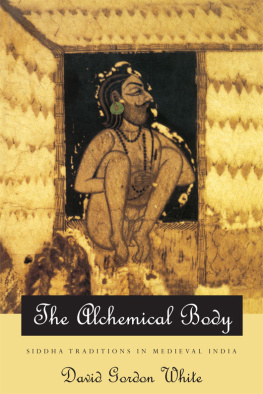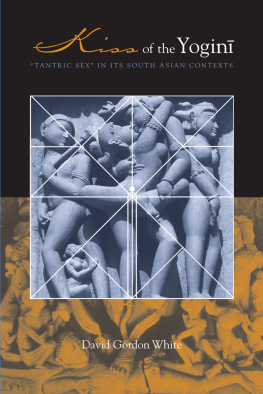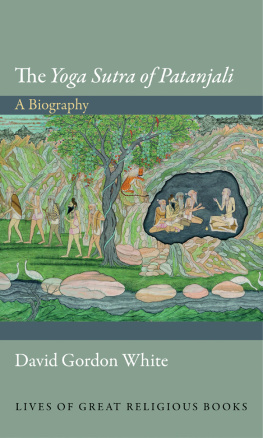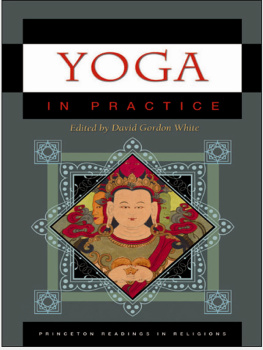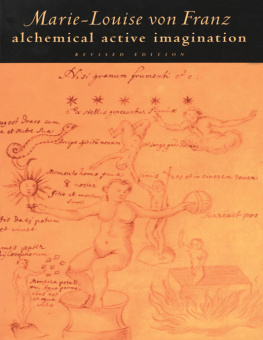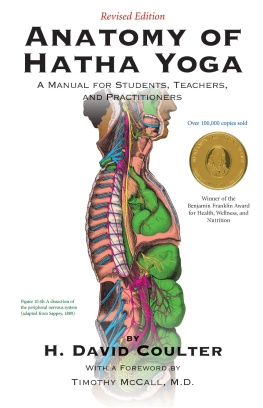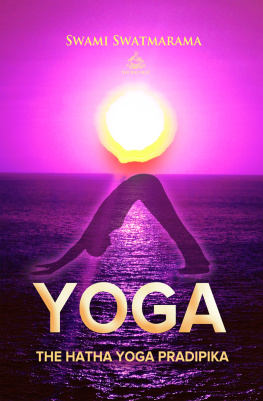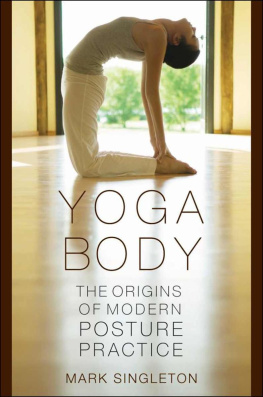
THE ALCHEMICAL BODY

Siddha Traditions in Medival India

DAVID GORDON WHITE
THE UNIVERSITY OF CHICAGO PRESS/CHICAGO AND LONDON
for Catherine
In the new age India of the 1990s, it has become popular, even fashionable, to have the name of a tntrika, a kind of all-purpose sexologist, medicine man, and shaman, in ones little black book of phone numbers. This same phenomenon has brought with it the appearance, preceding the title page of books on magic and tantra, of disclaimers to the effect that said book does not guarantee the results of the techniques it is treating and that its editors are not responsible for unhappy side-effects of said techniques when they are practiced in the privacy of ones home. The present work carries no such disclaimer because it in no way purports to be a how-to book for realizing immortality. Nor is this a study in the history of Indian medicine or science: a great number of Indian scholars and scientists as well as a growing number of western authors have written excellent works on the matters I will be treating from these perspectives, incorporating into their writings comprehensive overviews of Indian chemistry, human physiology, pharmacology, and therapeutics.
The present work is rather a history-of-religions study of the medieval Siddha traditions of Hindu alchemy and haha yoga, which formed two important fields of theory and practice within the vast current of Indian mysticism known as tantra. It is the religious and, more specifically, tantric features of these interpenetrating traditions that I will be treating in these pages, from both a historical and a phenomenological perspective. In the main, this will be a study of the language of mystic experience and expression, and it will be from the standpoint of language that I will chart out the theoretical, symbolic, and analogical parameters of the alchemical and hathayogic disciplines within their broader tantric and Hindu contexts. And, working from the semantic and symbolic fields of meaning that the alchemical material generates, this study will also look at a much wider array of Hindu and Indian phenomena through alchemical eyes.
This will furthermore be a scholarly work, nearly entirely divorced from
Ultimate reality is beyond my reach, either to experience or express. I nonetheless hope that these pages may serve to bridge a certain gap between raw experience and synthetic description, and thereby contribute to an ongoing tradition of cultural exchange that is at least as old as the Silk Road.
In reading these pages, the reader may come to experience a sensation of vertigo, as the horizon of one mystic landscape opens onto yet another landscape, equally vast and troubling in its internal immensity. It may be that these landscapes,
I treat alchemical and tantric discourse as self-referential, as part and parcel of a self-enclosed network of specifically Indian symbols and signs, my assumption being that the words and images of these traditions are always referring, before all else, to other words and images. Rather than exposing the doctrines of any single school, movement, or exegetical tradition, this study seeks to lay bare the words, images, and logic that a wide swath of the Hindu, and particularly aiva (and tantric), population always already assume to be the case prior to giving voice to their doctrines.
This is, in the main, a study of a pervasive Indian worldview from a tantric and alchemical perspective. Now, if we follow Douglas Brooks when he maintains that Hindu tantrism has been treated as an unwanted stepchild in the family of Hindu studies; then the subject of this study has a troubled family life. Perhaps it is the stepparents and adolescents judgment that one ought to question here.
This book is the fruit of twelve years of research begun at the University of Chicago, where I began to translate the bns, the mystic vernacular poems of Gorakhnth, under the direction of Professor Kali Charan Bahl. The use of metaphor and imagery in these poems reminded me of similar language from an alchemical work entitled the Rasrava (The Flood of Mercury), which I had attempted to translate (with mitigated success) for a self-styled French mystic a few years earlier.
It was on the basis of these first tentative identifications that I embarked in earnest on the present research, going to India in 198485 under the auspices of a grant from the American Institute for Indian Studies. It had been my intention, in undertaking my research tour, to find a living yogin-alchemist and to sit at his feet until I had solved all the riddles the Rasrava and the Gorakh Bn had posed for me. This endeavor was a total failure. There were no alchemists to be found in the places in which I sought them out (although I did meet a number of amateurs and charlatans), and the few Nth Siddhas who struck me as genuine practitioners of the haha yoga taught by Gorakhnth made it clear that they would be willing to divulge their secrets to me only after a long period of discipleship.
Being a westerner in a hurry, I spurned this path, in spite of its many attractions, for that of the textualist. First in India, under the guidance of a number of professors of Ayurvedic studies, and later in Europe and the United States, then in India and Nepal once again, under the auspices of a grant from the Council for the International Exchange of Scholars, I followed the leads the texts offered me. In spite of my rush at the outset, it is only now, after an additional ten years, that I feel myself capable of understanding these mystic disciplines sufficiently to be able to share certain of my insights on them. Let the reader be forewarned, then, that my interpretations of the language of the Hindu alchemical, hathayogic, and tantric traditions bear no stamp of approval from any Indian guru of any sect whatsoever. This is a textual study, one that is based, in any case, on a number of texts for which the all-important chain of transmission of oral tradition from teacher to disciple has long since been broken. In the absence of a teacher from the tradition itself, I have taken the difficult road of letting the texts speak for themselves and even communicate among themselves as the exemplars and followers of the medieval Siddha traditions under study here would have done. I hope they will speak to the reader of this work as well.
I feel somewhat justified in my textualist bias, however, since it is shared by the alchemical tradition itself. We read in three major alchemical works that neither sequence (oral teachings) without written sources nor written sources without sequence [are acceptable]. Knowing the written sources to be conjoined with sequence, the person who then practices [alchemy] partakes of the siddhis. On still another score I also believe this to be an authentic work. The twelve years preparation this book has required of me corresponds to the standard period of preparation of a yogin in the traditions under study here. Twelve years, the mystic homologue of a year of twelve months in which the seasons and the dance of sun and moon are brought full circle, seems to me to be an appropriate period for this scholarly exercise, which will have succeeded if its final transmutation of raw data into food for thought pleases the readers palate.
Many are the people to whom I owe thanks for their help in the preparation of this book. A great number of these persons names will be found in the text of this book itself or in the endnotes, under the rubric of personal communication. This group includes several of the countless Nth Siddhas who offered to share their
Next page
